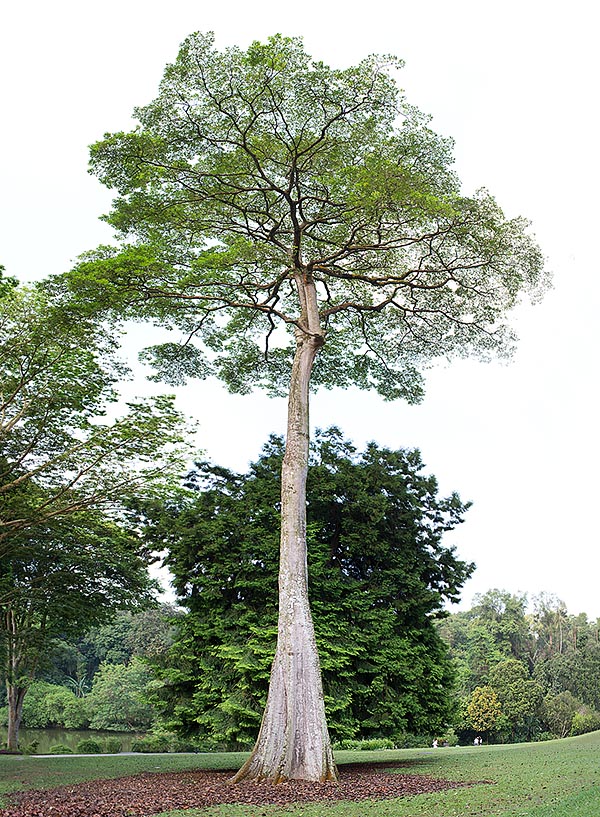Family : Apocynaceae

Text © Pietro Puccio

English translation by Mario Beltramini

Alstonia pneumatophora can be 60 m tall with 2 m of diameter © Giuseppe Mazza
The genus is honoured to the Scottish botanist Charles Alston (1683-1760); the name of the species is the combination of the Greek substantive “pneuma, -atos” = blow, and of the verb “phero” = to carry, with reference to the breathing roots (pneumatophores).
Common names: pulai, pulai rawa (Indonesian).
The Alstonia pneumatophora Baker ex Den Berger (1926) is an evergreen tree with smooth bark of greyish white colour and milky sap, 50-60 m tall and even more with a diameter which can exceed the 2 m, the tallest specimen reported (2012) measures 85 m; in swampy or periodically flooded zone it produces pneumatophorous roots (roots which emerge from the water or the mud allowing the oxygen flow to the submerged organs).
The leaves are simple, sessile or sub-sessile, coriaceous, obovate to spatulate with rounded apex, 7-12 cm long and 3-5 cm broad, arranged in verticils of 5-6, of intense green colour. Cymose terminal inflorescences carrying numerous flowers with funnel-shaped corolla having 5 lobes, of about 0,7 cm of diameter, of yellowish white colour, perfumed.
The fruits are dehiscent follicles produced in pair, 24-30 cm long, containing many oblong seeds of blackish brown colour, about 0,5 cm long and of 0,2 cm of diameter, provided with silky hairs which favour its dispersion through the wind. It reproduces by seed, which must be fresh as it has a rather limited germination capability, in organic sandy loam kept humid, at the temperature of 22-24 °C, with germination times from 2 to 12 weeks, and by cutting. Fast-growing species that in the wild grows in humid tropical climate zones, preferably at the margins of swampy zones periodically flooded, but which well adapts also to dry soils of various natures, when adult, in fact, is able to stand periods of dry. The sap contains indolic alkaloids which might have interesting applications in medicine. The wood, commercially known under the common name “pulai”, of clear colour, is utilized for wood carvings, furnishings, boxes and for plywood.
Synonyms: Alstonia pneumatophora var. petiolata Monach. (1949).
→ To appreciate the biodiversity within the APOCYNACEAE family please click here.
